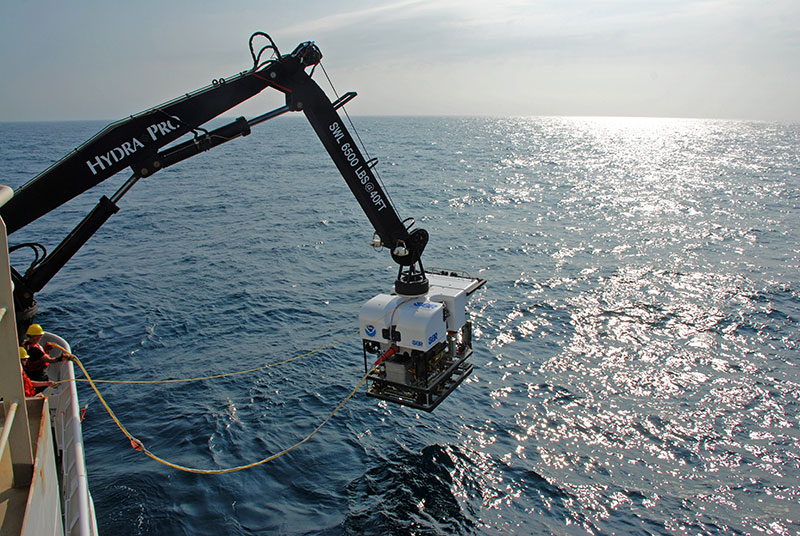The first remotely operated vehicle dive of the expedition was conducted today at a site east of Block Canyon, transiting up a steep slope to investigate headwall scarps of a large landslide scar on the lower continental slope. The dive started at approximately 1,870 meters, transiting over a fairly flat, soft-sedimented bottom toward the base of the slope feature (or headwall scarp). A number of large angular boulders, likely detached from the adjacent vertical walls, and sea spiders, several species of sea pens, and a variety of fishes were encountered. Hardbottom habitats were encountered as we surveyed upslope: two large vertical rock walls with relief of more than 15 meters and separated by a steeply sloped ledge, and several other smaller walls and rock/boulder outcrops. Numerous corals colonized the faces and tops of the large hard features and cup corals were observed attached to the underside of ledges. Brown staining was observed on the rock walls, and in many areas the hard substrates were heavily eroded, with numerous burrows and crevices. Some columnar structures were also observed. The top of this feature at approximately 1,621 meters depth was covered with soft sediment composed of silt and silty clays and was home to few animals except halosaur fish and cutthroat eels. The sessile fauna was dominated by Acanella sp., a type of bamboo coral that commonly occurs on both soft and hard substrates.
